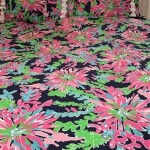Definition of Bedding in Geology
In the realm of geology, the term "bedding" refers to a fundamental structural feature of sedimentary rocks. It describes the layered arrangement of sediments, which form as a result of depositional processes over time. These layers, known as beds, can range in thickness from millimeters to meters, and their arrangement provides crucial insights into the geological history of an area. Understanding bedding is essential for geologists as it reveals information about the depositional environment, the age of the layers, and the geological events that shaped the rock formations.
Formation of Bedding
Bedding arises primarily from the process of sedimentation, where particles of various sizes and compositions are transported by water, wind, or ice and eventually settle down in a basin or depression. As the sediments accumulate, they are subjected to pressure from overlying layers, leading to compaction and cementation. The layers that develop due to this process are called beds, and their boundaries are often defined by distinct changes in texture, composition, color, or fossil content.
The formation of bedding is influenced by several factors, including:
- Source of sediments: The type of rocks that are eroded and transported as sediments will influence the composition of the beds.
- Transporting medium: The energy and characteristics of the transporting medium, whether wind, water, or ice, will affect the size and sorting of the sediments.
- Depositional environment: The specific conditions under which sediments are deposited, such as a river, lake, or ocean, will determine the types of beds that form.
- Climate: Climate influences the rate of erosion, weathering, and sediment transport, which in turn affects the characteristics of bedding.
Types of Bedding
Bedding can be classified into various types based on its characteristics, including:
Horizontal Bedding
The most common type of bedding is horizontal bedding, where layers are essentially parallel to each other. This type typically forms in environments with relatively consistent sedimentation rates, such as deep ocean basins or lakes. Horizontal bedding is often used to establish the relative ages of rock strata, with older layers lying beneath younger layers.
Cross-Bedding
Cross-bedding occurs when sediments are deposited at an angle to the main bedding plane. This type of bedding is commonly found in environments where currents or winds are strong enough to create migrating sand dunes or ripples. The angle of the cross-beds can provide information about the direction and strength of the ancient currents or winds.
Graded Bedding
Graded bedding involves layers that exhibit a gradual change in grain size from coarse at the base to fine at the top. This type of bedding forms when a sediment-laden current slows down, causing larger particles to settle out first, followed by smaller particles. Graded bedding is often indicative of rapidly deposited sediments, such as those associated with turbidity currents.
Ripple Marks
Ripple marks are small-scale, wave-like structures that form on the surface of sediments due to the action of water or wind. They can be preserved as casts or molds in sedimentary rocks. Ripple marks can provide information about the direction of current flow and the depth of water or wind conditions during deposition.
Bioturbation
Bioturbation refers to the disruption of bedding structures by living organisms, such as burrowing animals. The burrows and trails left behind by these organisms can create distinctive patterns within sedimentary rocks. Bioturbation can indicate the presence of life during deposition and provide insights into the ecological conditions of the past.
Significance of Bedding
Bedding plays a crucial role in geological studies for several reasons:
Stratigraphy
Bedding is fundamental to stratigraphy, the branch of geology that deals with the study of layered rocks. By examining the sequence and characteristics of beds, geologists can reconstruct the geological history of an area and determine the relative ages of rock formations.
Depositional Environments
The types of bedding present in rocks provide invaluable information about the depositional environment in which the sediments were originally deposited. For example, cross-bedding indicates the presence of currents or winds, while graded bedding suggests rapid deposition from turbidity currents.
Paleocurrent Analysis
The orientation of bedding features, such as cross-beds and ripple marks, can be used to determine the direction of ancient currents or winds. This information is crucial for understanding the paleogeography of an area and reconstructing past environmental conditions.
Economic Geology
Bedding can also be important in economic geology, as it can control the distribution of mineral deposits. Certain types of bedding may be associated with particular types of ore deposits, such as those formed by sedimentary processes.

Bedding And Lamination Geology Is The Way

Sepm Strata

Bed Geology Simple English Wikipedia The Free Encyclopedia

Bed Geology Wikipedia

Crossbedding

Learning Geology Flows Sediments And Bedforms

What Do You Mean By Torial Bedding

Cross Bedding Wikipedia

Lenticular Bedding Wikipedia

Sedimentary Structures And Textures Geology Science








